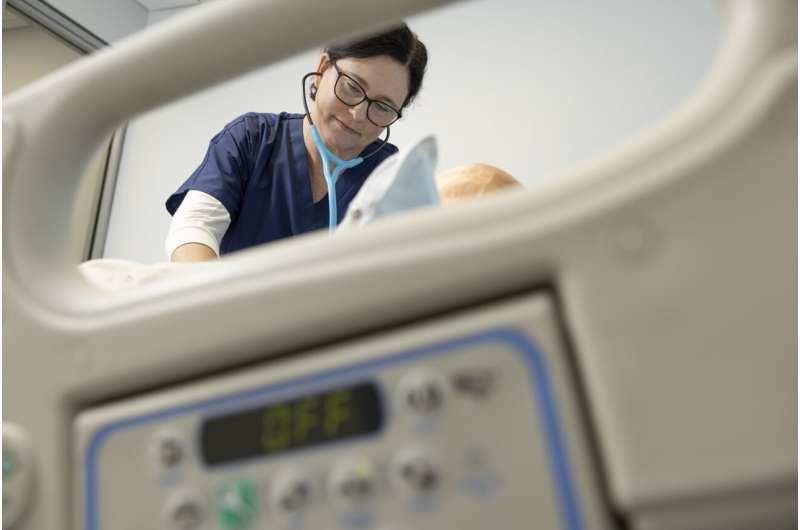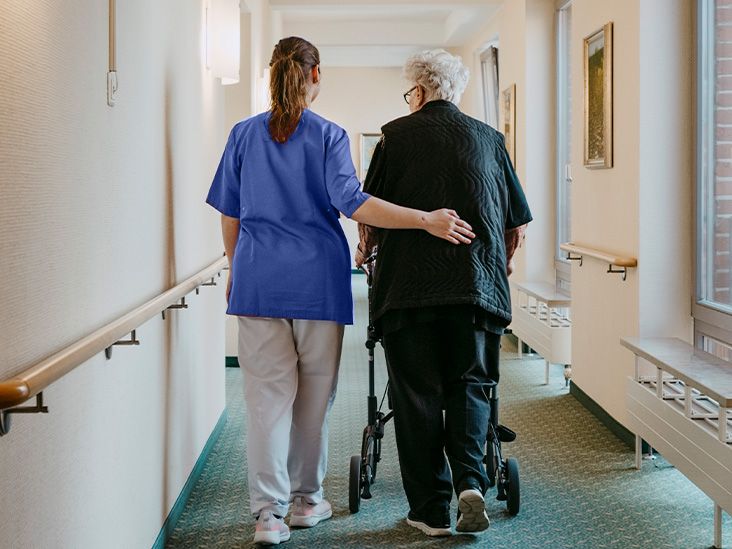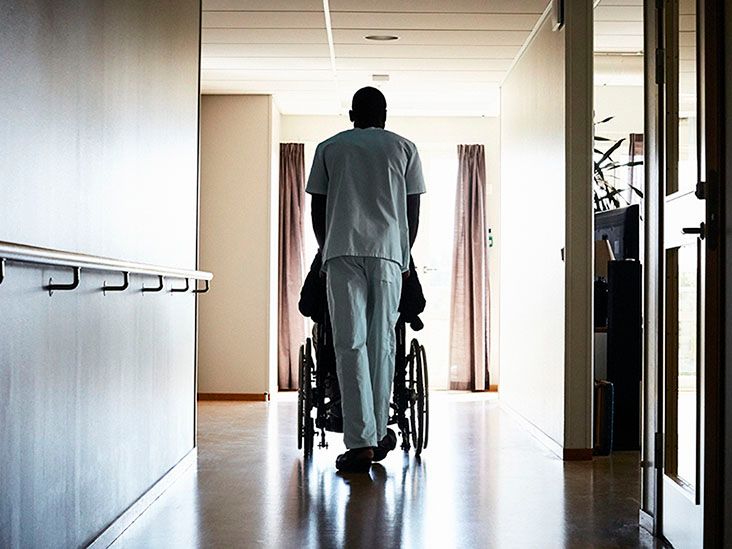Understanding the End of Life: How to Prepare Yourself and Your Loved Ones
The end of life is an inevitable part of the human experience. As we or our loved ones near the end of life's journey, there are many preparations that must be made to ensure comfort, dignity, and closure.
While death is never an easy subject, being proactive and planning ahead can help ease the transition for all involved. This guide will examine the physical, mental, emotional, and spiritual aspects of preparing for the end of life.
Communicating About End of Life Wishes
One of the most important parts of preparing for the end of life is communicating your wishes to family members and healthcare providers. This includes:
- Advance directives - Legal documents like living wills and medical power of attorney declarations that outline your wishes for medical care and who can make decisions on your behalf if you are unable.
- Will and estate planning - Documents that specify how assets and possessions should be distributed after death.
- Funeral and burial plans - Prepaying and preplanning some or all funeral arrangements to ease the burden on loved ones.
- Legacy documents - Letters, videos, or other materials to share memories, values, life lessons, and final wishes with loved ones.
Openly discussing these plans and wishes with family and your doctor ensures everyone is on the same page about the path forward.
Finding Support for Yourself and Your Family
Coping with a life-limiting diagnosis or caring for someone at end of life comes with many challenges. Seeking support can help navigate this difficult time.
- Connect with healthcare providers, social workers, therapists, support groups, and community resources.
- Talk with religious leaders or spiritual counselors for rites, rituals, and comfort aligned with your beliefs.
- Discuss options like hospice and palliative care to ease pain and provide medical, emotional, and spiritual support.
- Explore complementary approaches like art and music therapy for enriching quality of life.
You don't have to go through this alone. Support is available to enrich life's final chapter.
Making Lifestyle Adjustments
As abilities change near end of life, certain lifestyle adjustments can optimize comfort and quality of life:
- Modify your living space to be safer and more accessible as mobility decreases.
- Find tools and strategies to help stay independent and engaged in daily activities.
- Maintain a healthy, balanced diet to avoid malnutrition and unwanted weight changes.
- Adapt enjoyable hobbies so you can continue doing things you love.
- Set aside time for relaxation and favorite pastimes each day.
Staying involved in life and adapting activities promotes overall well-being.
Finding Closure and Meaning
As the end draws near, many seek closure and meaning. This may involve:
- Completing unfinished business -resolve conflicts, tie up loose ends, and say things left unsaid.
- Celebrating life's joys - Remember and cherish happy memories, fun times, and major milestones.
- Leaving a legacy - Pass on values, lessons learned, memories, or possessions that signify your life's purpose.
- Spiritual reflection - Explore existential questions and connect with things larger than oneself for peace.
Finding purpose and closure lends peacefulness to life's final chapter.
Physical Changes as the Body Shuts Down
The body goes through various physical changes leading up to death as systems shut down. Being aware of these changes helps understand what a loved one is experiencing.
Loss of Appetite
As the digestive system slows, appetite diminishes. The body has less need for energy from food. Forcing food can cause discomfort. Keeping the mouth moist with sips of water or ice chips helps.
Increased Fatigue
End of life fatigue stems from the body working harder as organs decline. Respect the need for additional rest. Focus available energy on meaningful interactions or activities.
Changes in Temperature
Circulation slowing causes extremities to cool and skin to become pale or bluish. Keep blankets handy and avoid using electric blankets which can cause burns.
Changes in Breathing Patterns
Congestion from decreased lung capacity creates strained, ragged breathing. Elevating the head with pillows makes breathing easier. Some use oxygen masks to aid airflow.
Disorientation and Restlessness
Imbalances in metabolism, hormones, oxygen, and brain activity contribute to intermittent restlessness, confusion, and disorientation. Keeping familiar objects nearby and speaking in calm tones can help reorient.
Inability to Communicate
Declining consciousness from multiple organ failure impairs the ability to communicate. Take cues from nonverbal signals like facial expressions and touch. Offer assurance they are not alone.
Loss of Bowel and Bladder Control
The brain no longer signals when waste needs releasing. Incontinence pads keep the dying person clean and comfortable. Frequent gentle cleaning prevents skin irritation.
Congestion and Rattling Breath Sounds
Secretions pool in the throat and upper chest when the cough reflex ceases. This causes a rattling sound. While distressing to hear, it doesn't indicate pain. Gently turning or repositioning may help.
Providing Comfort Care in the Final Hours
Keep the person nearing death as comfortable as possible through these measures:
Pain Management
Give prescribed medications regularly. Communicate with hospice or palliative care about increasing dosages if moaning, grimacing, or restlessness indicate pain.
Positioning
Avoid having them lay flat, which can worsen congestion. Prop up the head and chest at a 45 degree angle if possible. Turning side-to-side prevents bedsores.
Mouth and Eye Care
Moisten the lips and clean the mouth. Use eye drops or a damp cloth to irrigate dry eyes.
Hand Massage
A hand massage with lotion feels soothing and helps family members connect. Apply gentle pressure, especially to the palms, in circular motions.
Music Therapy
Play favorite or soothing music in the background at a low volume to create a calming environment.
Aromatherapy
Scented lotions or essential oils like lavender provide comfort. Avoid strong scents that could overwhelm.
Cooling
Use cool cloths on the forehead, neck and feet to keep the body temperature down.
Signs That Death is Near
Certain symptoms indicate the final phase when death is just days or hours away:
- Profound weakness
- Minimal or no intake of food and fluids
- Difficulty swallowing medications
- Coolness spreading through the arms and legs
- Changes in breathing - slow and irregular patterns
- Loss of control over bowel and bladder
- Disorientation and confusion about time, place and identity
- Restlessness, agitation, inability to sit still
- Eyes open less often and for shorter periods
These signs indicate the person is transitioning and death will occur within days or hours. Providing comfort care remains the priority during the final phase.
What to Expect During Active Dying
The active dying phase lasts from a few days up to three weeks. Here's what typically occurs:
Profound Weakness
The body has little energy reserves as multiple systems shut down. Speaking becomes nearly impossible. Complete bed rest is necessary.
Minimal Fluid and Food Intake
The digestive system loses abilities to utilize nutrients from food. Do not try giving food or water by mouth. Moisten lips with swabs as needed for comfort.
Difficulty Swallowing
Weakened muscles make swallowing hard. Medications are often discontinued at this point if not needed for comfort. Do not try to force swallowing.
Cool Extremities
Blood flow concentrates to preserve function of vital organs. Arms and legs become very cool to the touch. Keep the person warm with blankets.
Irregular Breathing
Patterns turn shallow, ragged, with periods of no breathing for 5-30 seconds. Congestion causes labored, gurgling sounds. Raising the head may help.
Loss of Bowel and Bladder Control
Loss of sphincter control results in release of urine and stool without sensation. Use incontinence pads and gentle peri-care to keep clean.
Restlessness and Agitation
Metabolic changes and declining oxygen cause twitching, flailing, and attempts to sit up or get out of bed. Speak calmly and do not restrain movements.
Unresponsiveness
Interaction diminishes as consciousness declines. Offer your presence through soothing touch, music, prayer, or reading aloud.
Signs Death Has Occurred
When a loved one dies, you may first notice these signs:
- No breathing
- No heartbeat
- Loss of control over bowel and bladder
- No response to voices or touch
- Eyelids slightly open
- Eyes fixed in one direction
- Mouth slack and slightly open
- Coolness spreading through body
The moment of death brings stillness. Take time for goodbye. There is no rush to move or wash the body. Many find comfort in rituals like prayers, closing the eyes, and a farewell kiss.
Making Final Arrangements for Your Loved One
After a loved one passes, attending to these final details can provide closure:
Notifying Family and Friends
Inform close family and friends about the death, so they can offer condolences and help make arrangements.
Funeral and Burial Plans
Carry out prepaid plans if made. Otherwise, decide on burial or cremation and make related arrangements.
Obituary
Write and submit an obituary detailing your loved one's life story and service information to run in local newspapers.
Memorial Service
Schedule and hold a memorial service, vigil, or other commemoration of your loved one's life.
Settling Legal and Financial Matters
File any insurance claims, close accounts, and tend to estate distribution according to their will.
Taking care of final arrangements brings closure after loss. Move through tasks at your own pace with support from others.
Coping With Grief and Loss
The death of a loved one brings intense emotions. Know that grieving takes time and each person's process is unique. Helpful coping strategies include:
- Allowing yourself to fully experience and release emotions
- Commemorating and celebrating your loved one's life
- Accepting support from family, friends, bereavement groups
- Exploring activities and connections that bring meaning and comfort
- Taking care of your physical, mental and emotional health
Grief comes in waves, with good days and bad days. With time and patience, most find a way forward in building a life without their loved one.
Preparing for the End of Life Brings Peace
Though difficult to face, preparing for the end of life ultimately brings acceptance and meaning to this transition. Having conversations, getting affairs in order, tapping into support, and understanding the dying process helps you and your loved one navigate life's final chapter with more serenity.
FAQs
What are some advance directives people should have in place?
Important legal documents include a living will outlining medical wishes, a medical power of attorney assigning someone to make decisions if you cannot, and a will detailing how you want possessions distributed.
What physical changes happen as the body shuts down?
Common end of life physical changes include decreased appetite, increased fatigue, changes in body temperature, altered breathing patterns, disorientation, inability to communicate, and loss of bowel/bladder control.
What are some ways to promote comfort during active dying?
Comfort care strategies include pain management, repositioning, mouth and eye care, hand massages, music therapy, aromatherapy, and cooling the body with damp cloths.
How do you know death is about to happen?
Signs death is imminent include profound weakness, minimal intake of food/liquids, difficulty swallowing, cool extremities, irregular breathing, loss of bowel/bladder control, restlessness, and decreased consciousness.
What final arrangements need to be made after a death?
Tasks include notifying family/friends, making funeral/burial arrangements, writing an obituary, planning a service, settling legal/financial matters, and filing insurance claims.
Disclaimer: This article is for informational purposes only and does not constitute medical advice. Always consult with a healthcare professional before starting any new treatment regimen.
Related Coverage
Find the best Alaska Medicare plans for 2025. Compare Part D, Medigap, and Original Medicare options tailored to your needs....
Avoidable nursing home hospitalizations harm frail elders, disrupt care, and strain families. These preventable ER trips can be reduced with better on-site support and clear care plans....
Use nursing home ratings to find quality care. Learn how to interpret star ratings, compare facilities, and choose the best option for your loved one....
Find the best Medicare in Delaware options for you or your loved ones with our simple guide to coverage, costs, and enrollment....
Find out exactly what Medicare respite care covers, who qualifies, costs, and step‑by‑step ways to arrange it for your loved one....
Learn how the Medicare 3-midnight rule affects skilled nursing facility coverage and avoid unexpected out-of-pocket costs....
Coping with retinol irritation like burning, redness, dryness? Learn how long symptoms last, when to worry, and get aftercare tips to heal skin post inflammation....
Most people don't eat enough fruits and vegetables daily. Learn simple ways to add more produce through meal planning, snacking, and overcoming obstacles to reap nutrition benefits....
Get clear info on Medicare in Oregon, including coverage options, Medicare Advantage, Part D, and how it works with OHP....
Learn how the Scope of Appointment in Medicare protects your choices and ensures transparent plan discussions with agents....









